RADICALIZATION IN MULTIPOLAR WORLD:A STUDY OF THE RUNAWAYS (2nd part )
TOPIC
Factors and Perils of Radicalization in Multipolar World: A Study of The Runaways
M.PHIL IN ENGLISH (Literature)
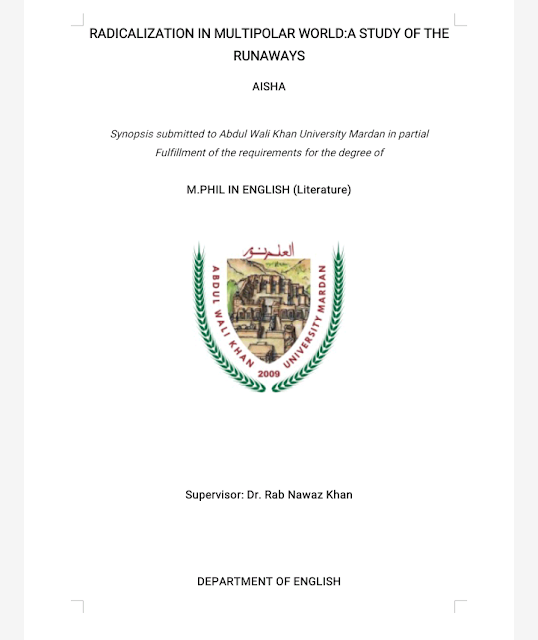 |
| Factors and Perils of Radicalization in Multipolar World: A Study of The Runaways M.PHIL IN ENGLISH (Literature) |
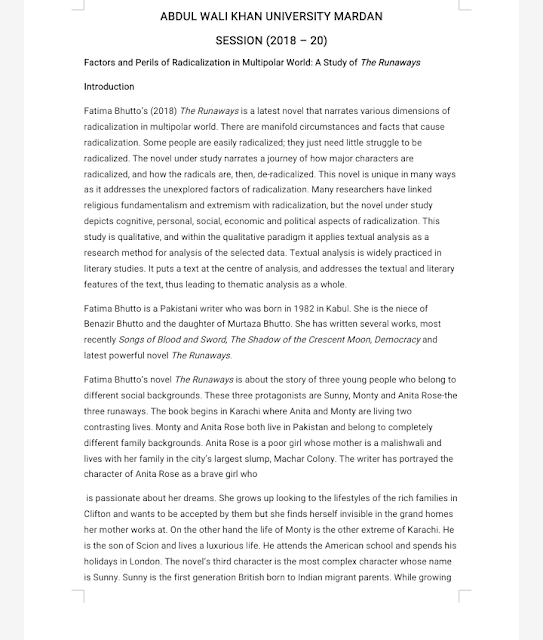 |
| Factors and Perils of Radicalization in Multipolar World: A Study of The Runaways M.PHIL IN ENGLISH (Literature) |
 |
| Factors and Perils of Radicalization in Multipolar World: A Study of The Runaways M.PHIL IN ENGLISH (Literature) |
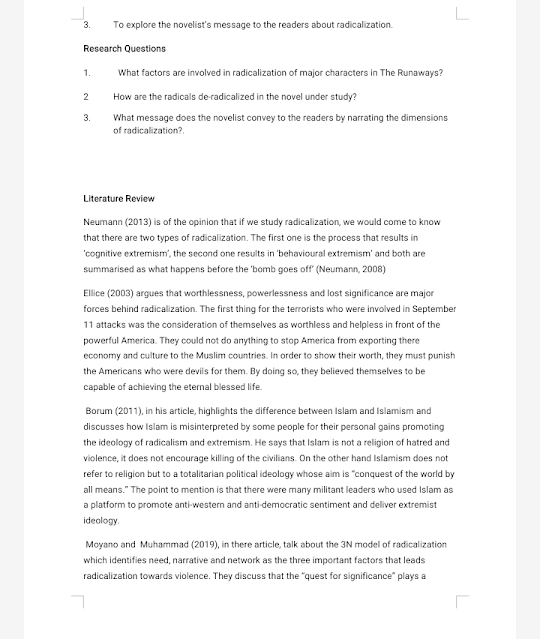 |
| Factors and Perils of Radicalization in Multipolar World: A Study of The Runaways M.PHIL IN ENGLISH (Literature) |
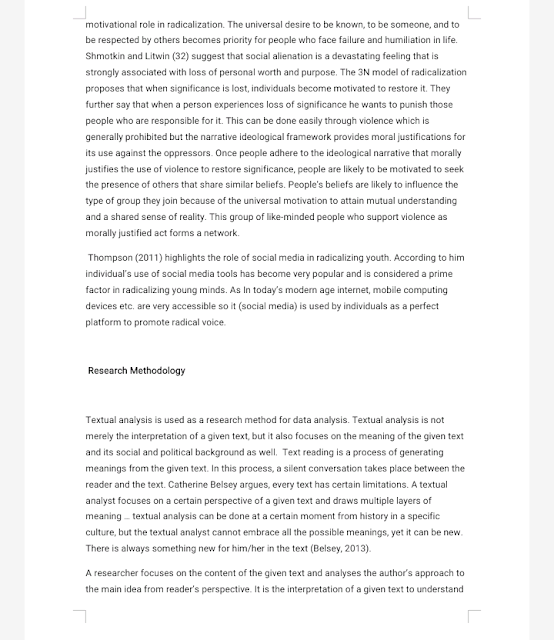 |
| Factors and Perils of Radicalization in Multipolar World: A Study of The Runaways M.PHIL IN ENGLISH (Literature) |
Statement of the Research Problem
Radicalization is a global issue which is a threat to many developing countries, and The Runways depicts the factors of radicalization in a multipolar world. The factors are personal, social, ideological, economic and political. This study explores how and why certain people are radicalized, and how radicalization creates manifold problems for others. Moreover, the radicals’ identity is in flux, and consequently, they struggle for their status and identity to be recognized.
Research Objectives
1. To highlight the circumstances that lead to characters’ radicalization;
2. To find out the ways used to de-radicalize the radicals;
3. To explore the novelist’s message to the readers about radicalization.
Research Questions
1. What factors are involved in radicalization of major characters in The Runaways?
2 How are the radicals de-radicalized in the novel under study?
3. What message does the novelist convey to the readers by narrating the dimensions of radicalization?.
Literature Review
Neumann (2013) is of the opinion that if we study radicalization, we would come to know that there are two types of radicalization. The first one is the process that results in ‘cognitive extremism’, the second one results in ‘behavioural extremism’ and both are summarised as what happens before the ‘bomb goes off’ (Neumann, 2008)
Ellice (2003) argues that worthlessness, powerlessness and lost significance are major forces behind radicalization. The first thing for the terrorists who were involved in September 11 attacks was the consideration of themselves as worthless and helpless in front of the powerful America. They could not do anything to stop America from exporting there economy and culture to the Muslim countries. In order to show their worth, they must punish the Americans who were devils for them. By doing so, they believed themselves to be capable of achieving the eternal blessed life.
Borum (2011), in his article, highlights the difference between Islam and Islamism and discusses how Islam is misinterpreted by some people for their personal gains promoting the ideology of radicalism and extremism. He says that Islam is not a religion of hatred and violence, it does not encourage killing of the civilians. On the other hand Islamism does not refer to religion but to a totalitarian political ideology whose aim is “conquest of the world by all means.” The point to mention is that there were many militant leaders who used Islam as a platform to promote anti-western and anti-democratic sentiment and deliver extremist ideology.
Moyano and Muhammad (2019), in there article, talk about the 3N model of radicalization which identifies need, narrative and network as the three important factors that leads radicalization towards violence. They discuss that the “quest for significance” plays a motivational role in radicalization. The universal desire to be known, to be someone, and to be respected by others becomes priority for people who face failure and humiliation in life. Shmotkin and Litwin (32) suggest that social alienation is a devastating feeling that is strongly associated with loss of personal worth and purpose. The 3N model of radicalization proposes that when significance is lost, individuals become motivated to restore it. They further say that when a person experiences loss of significance he wants to punish those people who are responsible for it. This can be done easily through violence which is generally prohibited but the narrative ideological framework provides moral justifications for its use against the oppressors. Once people adhere to the ideological narrative that morally justifies the use of violence to restore significance, people are likely to be motivated to seek the presence of others that share similar beliefs. People's beliefs are likely to influence the type of group they join because of the universal motivation to attain mutual understanding and a shared sense of reality. This group of like-minded people who support violence as morally justified act forms a network.
Thompson (2011) highlights the role of social media in radicalizing youth. According to him individual’s use of social media tools has become very popular and is considered a prime factor in radicalizing young minds. As In today’s modern age internet, mobile computing devices etc. are very accessible so it (social media) is used by individuals as a perfect platform to promote radical voice.
Research Methodology
Textual analysis is used as a research method for data analysis. Textual analysis is not merely the interpretation of a given text, but it also focuses on the meaning of the given text and its social and political background as well. Text reading is a process of generating meanings from the given text. In this process, a silent conversation takes place between the reader and the text. Catherine Belsey argues, every text has certain limitations. A textual analyst focuses on a certain perspective of a given text and draws multiple layers of meaning … textual analysis can be done at a certain moment from history in a specific culture, but the textual analyst cannot embrace all the possible meanings, yet it can be new. There is always something new for him/her in the text (Belsey, 2013).
A researcher focuses on the content of the given text and analyses the author’s approach to the main idea from reader’s perspective. It is the interpretation of a given text to understand how the people of a specific culture respond to the world around them. Textual analysis is a tool of gathering information about people’s interpretation of the world around. Researchers use it as a methodology to discover how people of various culture and subculture make sense of the life (McKee, 2003).
The main purpose of the textual analysis is to interpret the structure, content, and function of the given text. It is an approach to analyse how the text is affected by the social norms, and how the text affects the readers. It is a search for reality. As McKee argues, a text can never be an accurate representation of reality, because a text can be analysed from various perspectives, and every textual analysis of a given text brings forth a new text by decomposing the old one (McKee, 2003).Textual analysis is a process of finding the author (his/her psyche, history, society, beliefs etc.) “beneath the work”, and once this discovery is made the text is believed to be explained (Barthes, 1977).
Textual analysis is an important fragment of discourse analysis, but it is not only linguistic analysis, rather it comprises “discursive analysis” which means seeing and analysing text in terms of the various genres, styles, and discourse that articulate together (Fairclough, 2004). Catherine Belsey views textual analysis as a method of finding reality. As there is nothing like pure, because extra-text, the preceded one, is needed for the new description of reality. A text has multiple meanings and the reader is just a source of producing new meanings of the existing text. It is a reader’s job to use critical vocabulary for generating meanings where a text may not appear as a controlling device of the reader’s mind, rather it may appear as a companion of the reader to invite new interpretations by viewing it from somewhere else. Every text has a historical and cultural background. This background supports the reader to generate a critical view of the text from its historical perspective. While reading a text, a reader addresses the question which is posed by the text. To answer such questions a reader can make multiple interpretations as there is no end of textual analysis, because the same text may be interpreted in different way in future by another reader (Belsey, 2013).
References
Barthes, R. (1977). The Death of the Author. In S. Heath, Image Music Text (pp. 142-148). London: Fontana Press.
Belsey, C. (2013). Textual analysis as a research method. In G. Griffin, Research Methods for English Studies (2nd ed., pp. 168-169). Edinburgh University Press. Retrieved August 20, 2017.
McKee, A. (2003). Textual analysis: A beginner's guide. Sage. Retrieved from https://www.researchgate.net/publication/27470712_Textual_Analysis_A_Beginner's_Guide.
E. Brown Katherine, Saeed. (2014), Radicalization and Counter Radicalization at British Universities : Muslim encounter and lternatives
Borum Randy (2011) Radicalization into violent Extremism: A review of Social Science Theory .
Trip Simona.(2019) Psychological Mechanisms involved in Radicalization and Extremism.






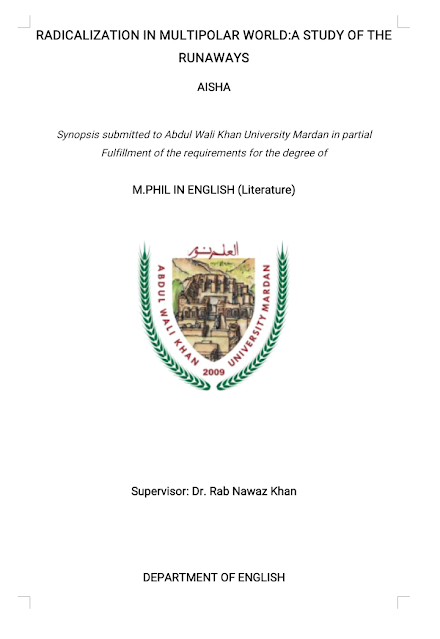

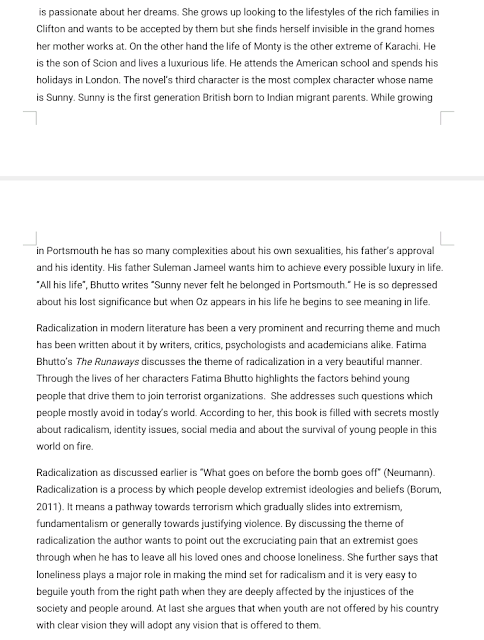
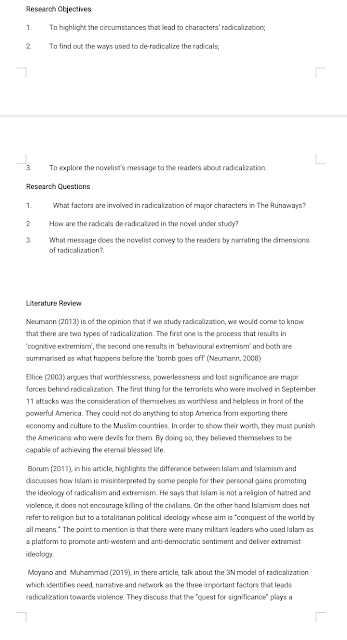

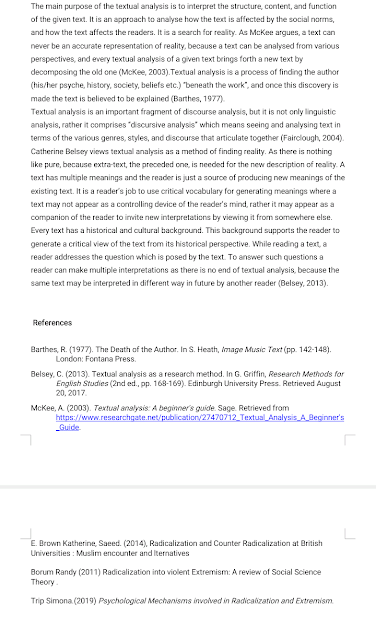
Social Plugin